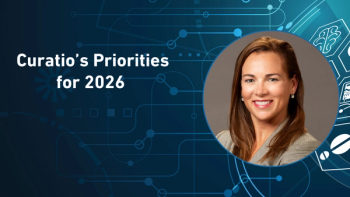
Access Insights 2023: A View from DC
Conference presentation explores groundbreaking topics impacting the pharma industry.
In an afternoon session at the Access Insights Conference titled “A View from DC,” Pari Mody, a senior associate with Arnold & Porter, dove into the hard-hitting regulatory and legislative topics affecting the pharmaceutical sector including the latest on Inflation Reduction Act (IRA) implementation; pharmacy benefit managers (PBMs) and price transparency; accumulators, maximizers, and alternative funding programs (AFPs); the 340B drug pricing program; and more.
IRA implementation
As a general timeline, the first rebate accrual period for Part D inflation rebates began Oct. 1, 2022; by Jan. 1 of this year, the first rebate accrual for Part B inflation rebates went in effect.
By 2025, the Part D coverage gap is expected to be eliminated, and the manufacturer discount program begins. There will also be a $2000 out-of-packed (OOP) cap for Part D, and Part D based premium growth is capped to no more than a 6% annually through 2030.
The year 2026 is when the maximum fair prices (MFPs) for selected drugs take effect, but small biotech drugs are exempt from this.
PBMs, drug price transparency
Mody noted that there have been proposals in this space, such as the Modernizing and Ensuring PBM Accountability Act (MEPA), which would control or “delink” PBM pay for services to “bona fide service fees,” unless fully passed through to the patient.
In terms of transparency, the Lower Costs, More Transparency Act (H.R. 5378) requires PBMs to provide any plan sponsors with data surroudning prescription drug spending, such as acquisition cost of drugs, total OOP spending, formulary placement rationale, and aggregate rebate information.
Accumulators, maximizers, and AFPs
The standard is that patient OOP costs for drugs count toward the patient’s annual cap on out-of-pocket costs under their insurance benefit and toward satisfying their deductible.
The HELP Copays Act (H.R. 830/S. 1375) bans accumulators and currently has 101 House and 16 Senate sponsors. Essentially, Mody explained the act requires the Secretary to institute standards for group health plans and health insurance issuers offering group or individual health insurance coverage that defines “deductible,” “coinsurance,” “copayment,” and “out-of-pocket limit” to include “amounts paid by, or on behalf of, an [enrollee], including third-party payments, financial assistance, discounts, product vouchers, and other reductions in out-of-pocket expenses.” There is also a “conforming amendment” that would close essential health benefits (EHB) “loophole” by requiring “any item or service” covered under an EHB category to count toward the annual cost-sharing limit.
340 B drug pricing program
According the Drug Channels Institute, the 2022 value of 340B purchases at list prices were valued at $106 billion, while purchases at discounted 340B prices were 50% less at $53.7 billion.
These numbers grew significantly from the year prior, with 2021 coming in at $93.6 billion and $43.9 billion respectively.
It’s important to reference
Reference
A View from DC. November 7, 2023. Access Insights Conference, Orlando.
Newsletter
Stay ahead in the life sciences industry with Pharmaceutical Commerce, the latest news, trends, and strategies in drug distribution, commercialization, and market access.




